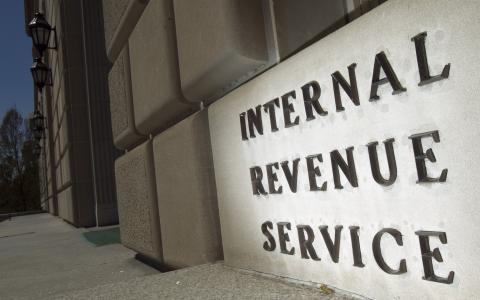
(Forbes) Ah...opportunity zones. Not since my private message pursuit of Kristen Bell have I invested so much time and effort into something only to receive nothing in return.
To be honest, the whole opportunity zone thing has been a bit of a phenomenon. Once an overlooked eight pages of sloppily-written text buried deep within the Tax Cuts and Jobs Act, over the last two years, the opportunity zone tax break – or at least talking about the opportunity zone tax break – has become big business. Not a week goes by that there isn’t an conference or three on the topic somewhere in the country. Over the summer, I arrived home from work one day to find the inaugural issue of Opportunity Zones Magazine in my mailbox. And to top it all off, in the past year, I’ve been interviewed by two opportunity zone podcasts, which is worthy of note only because it establishes that there are multiple opportunity zone podcasts.
I’ve gotten caught up in the excitement as much as anyone. This is now the sixth time I’ve published an article detailing the tax benefits afforded by Section 1400Z-2, and I’ve taught the topic more times than I can count. But rather than explain from my own perspective why this time has proved fruitless, allow me to share the words of a guy who stood – yes stood – in the back of my four hour workshop on opportunity zones for the AICPA this past November. About two hours into my class, as I explained the critical differences between QOZB, QOZP, and QOZBP, he’d finally heard enough. His hand shot up, and I asked if he had a question. He did.
“I gotta’ be honest,” he said, “Why should I care about any of this stuff?”
Now, given that I was charged with teaching 75 people how these rules worked, you would think I’d find his apathy frustrating. But the thing is, I got it. In knew exactly what he meant. Because for all the time I’ve spent learning, writing and teaching about the opportunity zone rules, I haven’t found more than a client or two that’s actually excited about them. The rest worry about the confusing rules. The long required holding period. The inability to enjoy losses or take distributions in the early years.
As a result, when I look back at the past 24 months, I’m struck by the realization that for all the effort I’ve put in to learning these rules, putting that education into practice has barely earned my firm enough in revenue to pay for a shiny new printer for our Nashville office.
Which brings me to this, article #6 on opportunity zones. Last Thursday, the IRS released final regulations under Section 1400Z-2 that tie together many of the loose ends remaining after the publishing of two sets of proposed regulations, one in October 2018 and another in May 2019. This article will attempt to put it ALL together: the statute, the two proposed regulations, and last week’s final regulations — on the off chance that 1) this is the first time you’re tackling these rules, and 2) you’re got clients that are ready to pull the trigger on an opportunity zone investment.
Because you may already be familiar with many of these concepts, however, throughout the article I’ll be sure to highlight those areas where changes were made by the final regulations. That way, if you’re only interested in perusing the latest developments, you can do that quickly and easily.
Here goes....
Opportunity Zones, In General
As part of the Tax Cuts and Jobs Act, Congress enacted two companion provisions designed to encourage investment and economic growth in certain low-income communities. First, Sec. 1400Z-1 paved the way for nearly 9,000 such low-income communities to be designated as "qualified opportunity zones" (QOZs). In turn, Sec. 1400Z-2 offers three federal income tax incentives to a taxpayer who invests in a business located within one of these zones: (1) the temporary deferral of capital gains, to the extent the gains are reinvested into a "qualified opportunity fund" (QOF); (2) the partial exclusion of previously deferred gains when certain holding period requirements in a QOF are met; and (3) the permanent exclusion of post-acquisition gains from the sale of an investment in a QOF held longer than 10 years.
Sec. 1400Z-2 entails a specific process, complete with critical definitions, deadlines, and quantitative tests that must be satisfied before the promised tax benefits become a reality. Before we get into the nuances of the law, we need to establish three things:
1. The life cycle of an opportunity zone investment,
2. The acronyms we’ll use throughout the article, and, perhaps most importantly,
3. The “spirit” of the incentive.
Life Cycle
The life cycle of an opportunity zone incentive can be represented at a high level as follows:
A taxpayer realizes “eligible gain” taxed as capital gain —> The taxpayer reinvests the gain within 180 days into a QOF and defers the gain for the year of sale —> The QOF conducts a “Section 162 business,” either directly by holding qualified opportunity zone business property (QOZBP) or indirectly by holding QOZ stock or a QOZ partnership interest, provided the subsidiary meets the definition of a qualified opportunity zone business (QOZB) —> After holding the interest in the QOF for five years, the taxpayer excludes 10% of the original deferred gain —> After an additional two years, another 5% of the original deferred gain is excluded —> Any remaining deferred gain is recognized on Dec. 31, 2026 unless an "inclusion event" occurs prior to that date —> After holding the interest in the QOF for a total of ten years, the taxpayer may sell the investment in the QOF — or, in limited circumstances — the QOF or QOZB may sell its assets — at any time before 2048 and the taxpayer can exclude all — or most of — the gain resulting from the sale.



